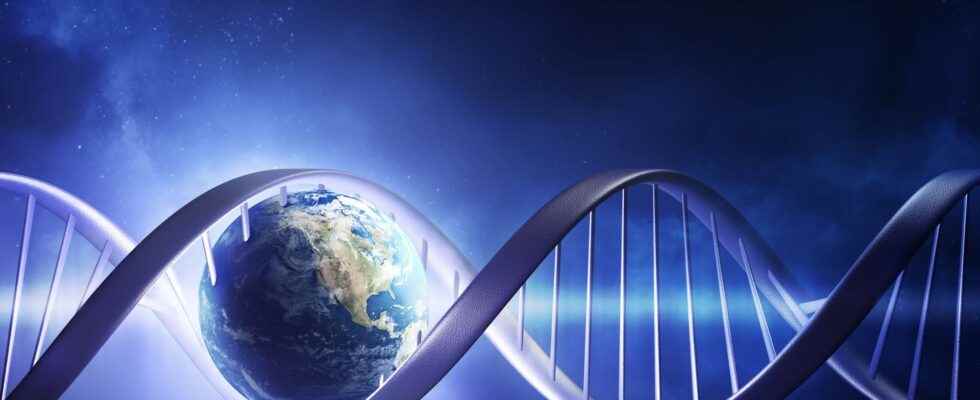How did life and the first biological molecules emerge from the primitive prebiotic soup? A new study on the original proteins takes a small step forward in understanding our origins.
You will also be interested
[EN VIDÉO] What phenomena are at the origin of life? As early as 1871, Charles Darwin had imagined that terrestrial life could have been born “in a small pond”, from various chemical compounds which would have combined to form complex molecules. Another school of thought — panspermia — brought life from outer space. Today, the question is not resolved but scientists lean towards Darwin with a prebiotic chemistry.
The question of origins andemergence of life on Earth has long been, and still is, a fundamental unresolved question. How did primitive life emerge from the “primitive soup” purely mineral, what did the oceans form 4 billion years ago?
The path leading to the formation of molecules able to self-replicate remains one of the great mysteries of biology. The foundations of this process could rest on the peptides and the proteins. However, it appears that the essential, central element without which life could not exist is the ability to manage energy. This is one of the very definitions of life: the ability to collect and use energy, whatever it may be.
Oxidation-reduction reactions at the basis of life on Earth
However, the basic biological reactions that occur within living cells are oxidation-reduction reactions that involve transfers of electrons, thereby providing the necessary energy. This observation implies that oxidation-reduction reactions must have been among the first functionalities acquired by all first forms of life. Understanding the molecular evolution responsible for the catalysis of oxidation-reduction reactions could therefore potentially help unravel the mystery of the origin of life.
In this context of reactions involving a transfer of electrons, the presence of metals in the environment seems to be an important point. Indeed, metals are the most effective chemical elements in the transfer of electrons and it appears that oxidation-reduction reactions often involve them. Researchers at Rutgers University, in the United States, therefore took an interest in the structures of metal-associating proteins, assuming that they would have made an excellent starting point for many functionalities of living organisms. These structures could even be the basis of the very first biological functions during the first stages ofevolution of life. A simple motif with an essential energy function which would subsequently have diversified.
The researchers therefore traced the evolution of these particular proteins containing metallic elements. It appears that these proteins are composed of base bricks which are found repeatedly. Moreover, the arrangements of these basic patterns show that these proteins all descended from a single, or a very small number, of ancestors.
Building blocks present before the assembly of the first proteins
The results of the study, published in Science Advances, therefore suggest that the peptides making up the original proteins should be used to facilitate the transfer of electrons, this step being absolutely essential to living beings. Basic elements for the necessary energy function, they would therefore have been widely reused and adapted in a wide variety of biological functions, which explains why we find today a similar structuring in all the functionalities of living organisms.
However, peptides are composed ofamino acids, which means that these were already present in the “primitive soup”. The researchers also suggest that the first peptides with biological functions were certainly already present before the assembly of the first proteins, 3.8 billion years ago.
Interested in what you just read?
.
fs3
